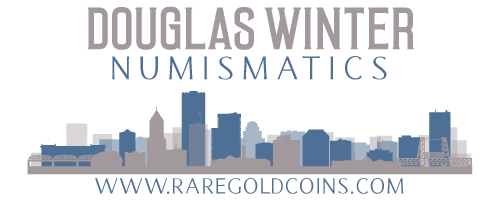Collecting $10 Liberty Head Gold Coins
/If you have deep pockets and lots of patience, assembling a set of $10 Liberty Head gold is one of the greatest challenges in all of U.S. numismatics. Even if you are lucky as far as locating the rarities in this series, you are looking at a $1-3 million commitment of funds and a time frame that should last at least three to six years; if not more. I once asked a $10 Lib specialist how he came to choose his set. To paraphrase his answer, he replied something along these lines: “gold dollars were too small, quarter eagles were too monotonous, three dollars and five dollars were incompletable (due to the 1870-S three and the 1854-S five) and double eagles were overpriced. That left the ten lib series...”
It’s hard to argue with brilliant logic like that. And there are a few more points to add. First, the coins are underpriced. As an example, there are a slew of issues that are really cheap (right now) when compared to coins like $10 Indians or Saints or even Liberty Head double eagles. The second is that these coins are big and contain nearly half an ounce of gold. So every time you buy a “boring” common later date issue you are still accumulating a nice chunk of this precious metal. Thirdly, you don’t (currently) have a huge number of collectors competing against you which means that if a rare undervalued coin comes up for sale, you just might be able to buy it very reasonably.
If I were a collector just beginning this series there are a few things that I would do right away.
The first is choosing a great dealer to work with you. Yes, this is a self-serving comment and yes I think I’m the right man for the job. That said, this is a long, complicated series that involves a lot of coin knowledge and good decision making. You can’t assemble a good set of $10 Libs with a mediocre dealer guiding you and you surely can’t do it on your own.
Secondly, I would set parameters for my set even before I began. I would draft a list that included every date in the series and make a decision what grade range I’d want for each date. The most common mistake that collectors make is that they overspend on the common issues and underspend on the keys. I would avoid paying big premiums for uninteresting dates in very high grades but I would make it a point to make the real rarities in the set as nice as possible.
As you can probably guess, I’d also stress learning what a choice, original $10 Lib looks like and sticking with that “look” throughout your set. It’s amazing how rare many of these coins are with choice, original surfaces. Let me give you an example. Take a seemingly uninteresting date like the 1868. PCGS has graded 116 as of September 2009 but only forty-one are in AU50 or better. Let assume that out of these forty-one there are a bunch of resubmissions and the actual number is around 25-30 distinct coins. Most are going to be dipped, heavily abraded unnatural examples that barely make the grade. I’m guessing that there are fewer than ten 1868 eagles known that would qualify as “choice and original” and which would be high enough grade-wise for an important set of $10 Libs. So, this seemingly mundane issue suddenly becomes a challenge to find. And this holds true for many dates throughout the series.
The complaint I hear from some collectors about the $10 Lib series is that it’s “too long.” Here’s a point to consider. It’s no more “long” than the Lincoln Cent series and I haven’t heard too many collectors complaining about Lincolns being uncollectable due to length. And this isn’t even beginning to consider all of the new die varieties that have crept into the Lincoln Cent set and are now “required” to make a set competitive in the Registry.
I’ve also heard collectors state that this series is “too hard” to collect. I actually don’t think this is true at all. If you want to assemble a complete set in Uncirculated, yes it is too hard (in fact, it’s impossible...). But if you want to do a set in VF-EF grades or even in AU and Mint State grades it is completable.
What are the stoppers to this set? The rarest $10 Lib is the 1875 which has as few as 6-8 business strikes known. In the last two decades I’ve only handled a single example and I am aware of a whopping three pieces having traded since the late 1980’s. The 1864-S is another very rare coin but it does come around a bit more frequently than the 1875. After this, there are dates like the 1844, 1863, 1873, 1876 and 1877 that are really rare but which are certainly attainable.
I was discussing the $10 Lib series with another dealer the other day and we came up with an interesting conclusion. If one serious collector started a set each year for the next five year, the entire supply/demand demand ratio of this series would be dramatically changed. And if a good book about the series were to be published in the next few years...well, all bets could be off.










